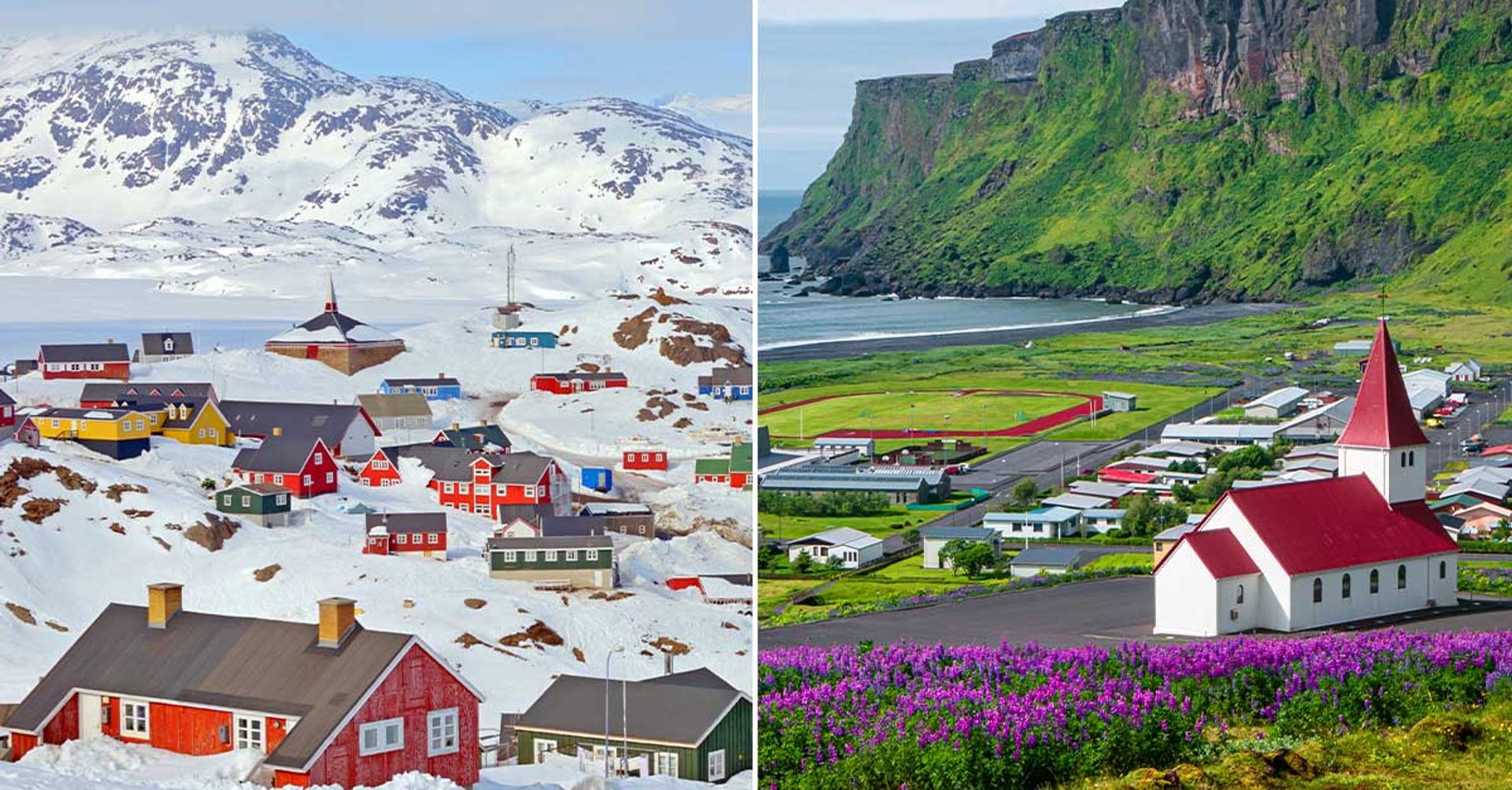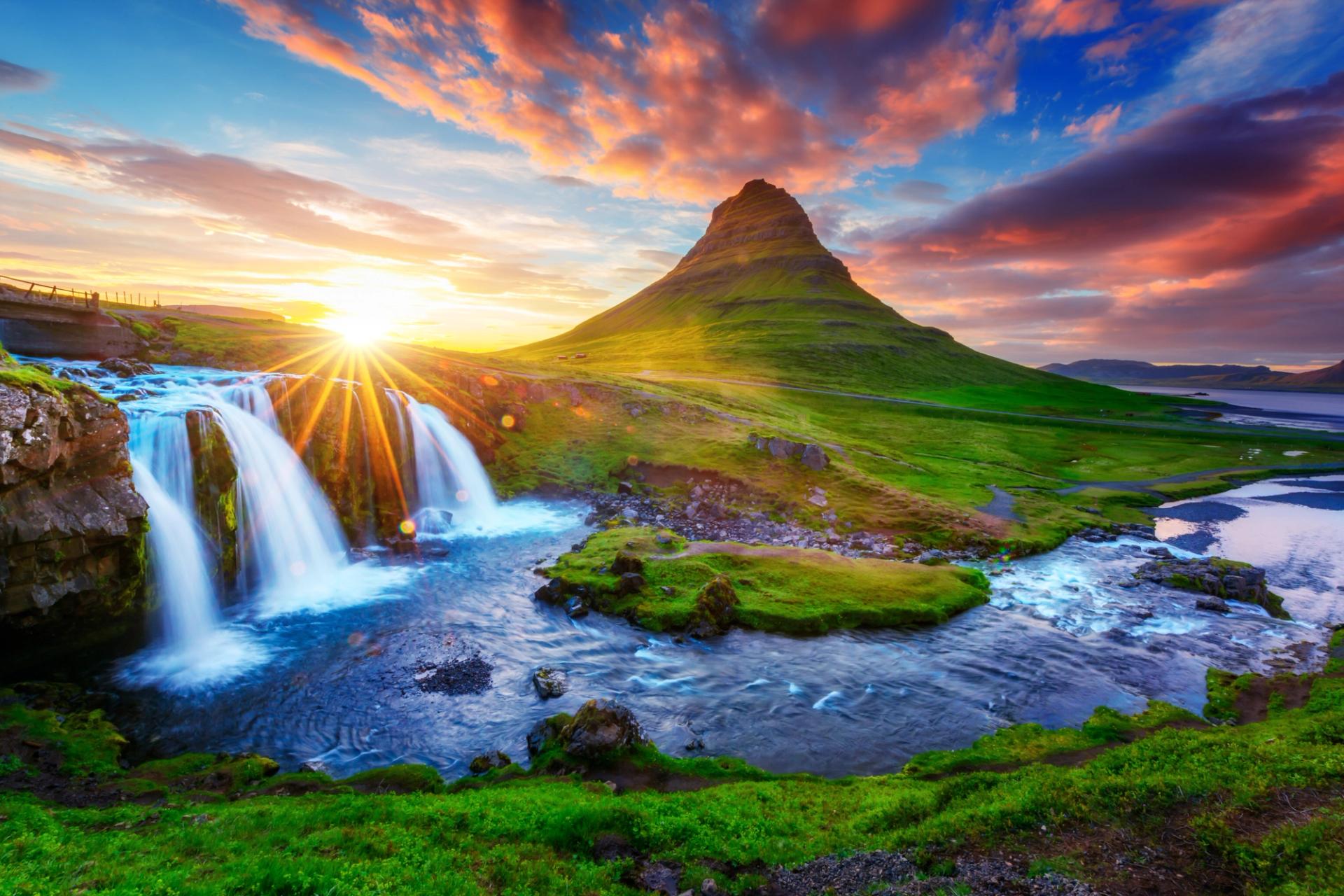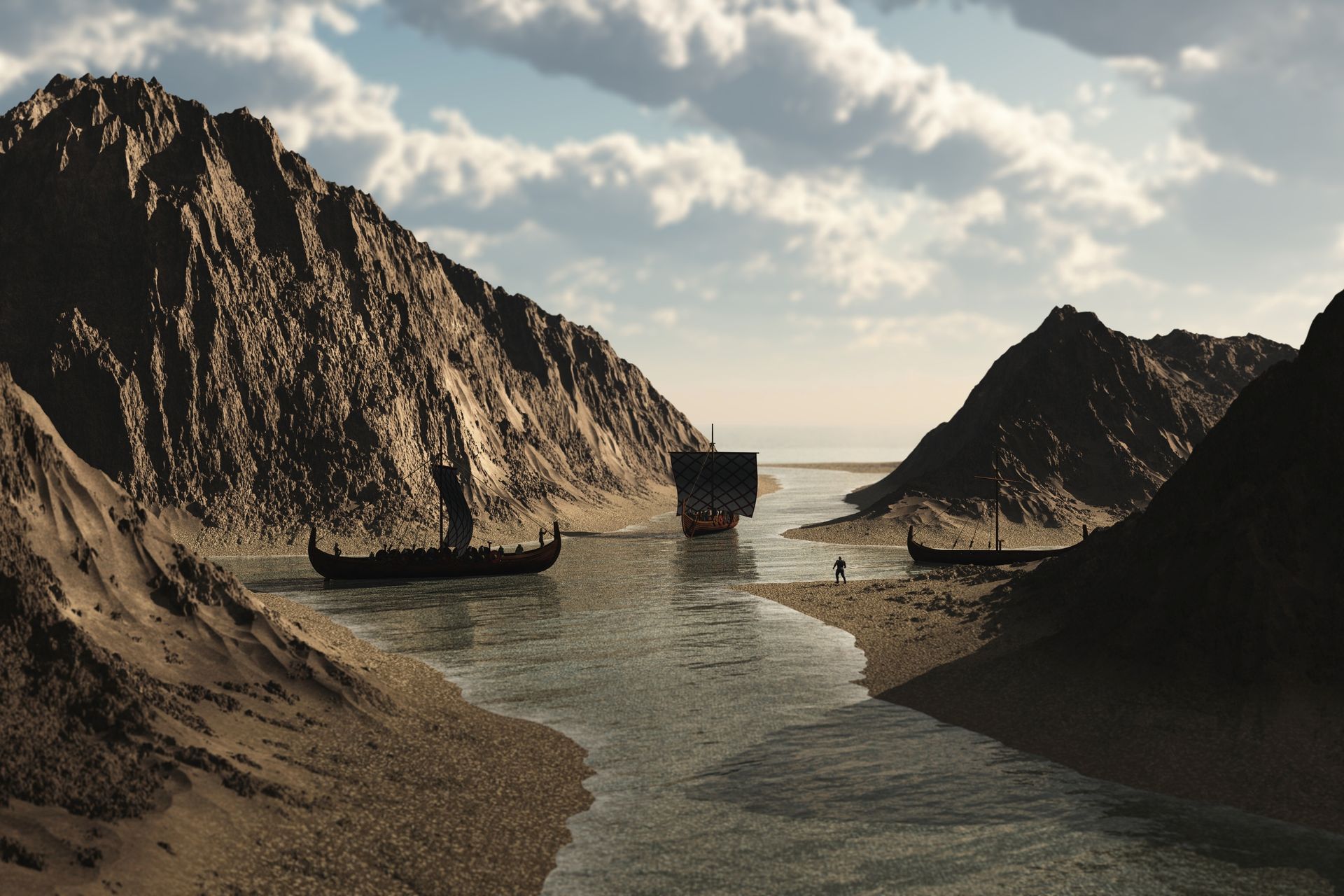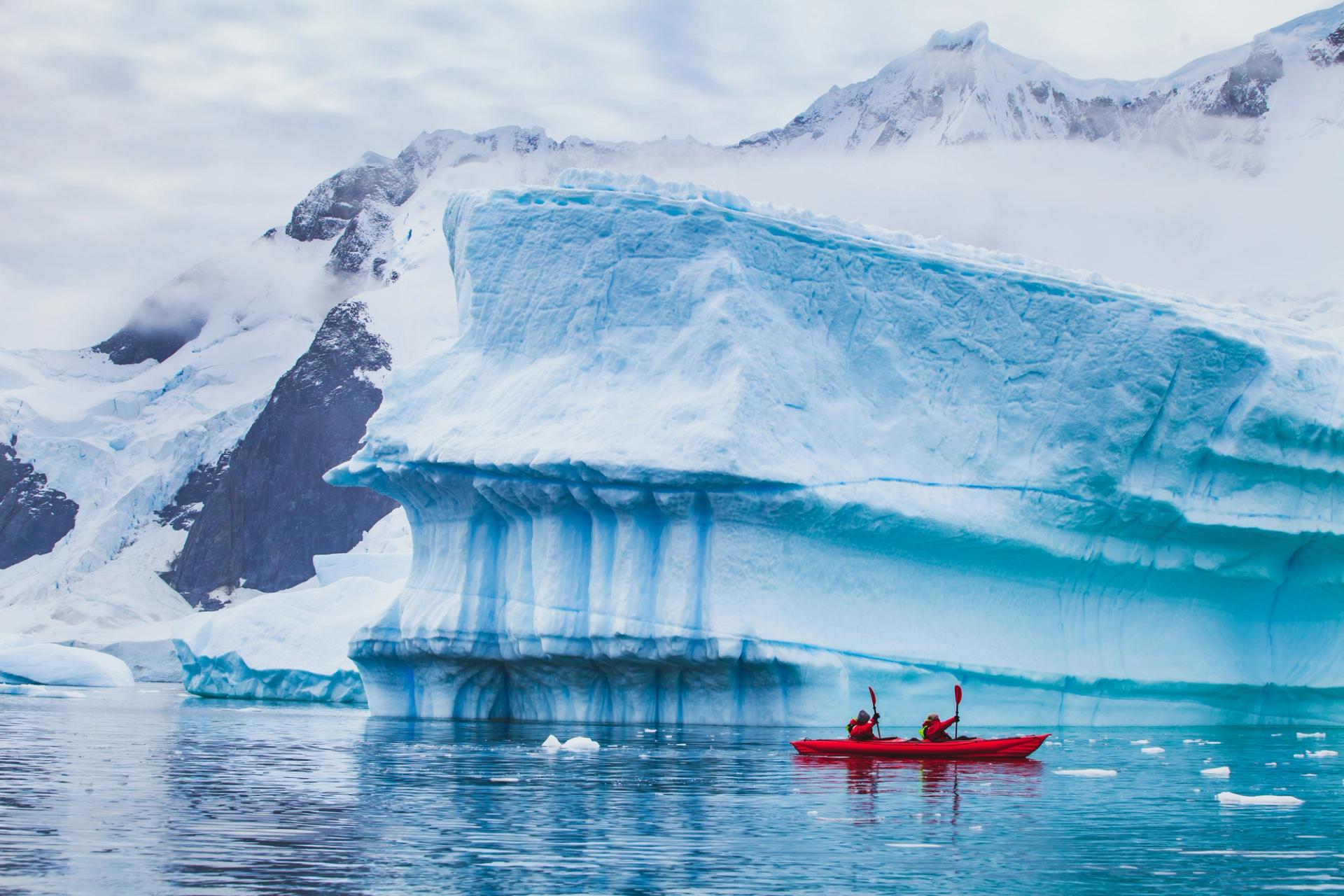 Icelandic Culture
Icelandic CultureWhy is iceland called iceland?
Have you ever asked yourself, "why is iceland called iceland?" or "why is Iceland Green and Greenland Ice?" or "why is Greenland Called Greenland?". So let's get into the questions surrounding Greenland vs. Iceland.
Greenland vs. Iceland
While Greenland and Iceland may seem like the same island, they are different countries with different climates. Therefore, the names may be confusing, and it's essential to know the difference between these two countries.
Iceland is known for its vibrant green meadows and enjoyable summers. In contrast, Greenland is known for being very cold and snowy, with little greenery. So why are the names opposite?
Iceland
Iceland is a sparsely populated Nordic island country in the North Atlantic Ocean. Over the last ten years, Iceland has become a popular tourist attraction. Primarily due to being featured in travel articles, movies, and television shows. Yes, the country does have massive glaciers and icefields. But, it also has beautiful green pastures and farms. Iceland can be visited both in the summer and the winter depending on the adventure you seek.
Iceland is a bit warmer than Greenland annually. Winters do still average about 38 degrees Fahrenheit. In comparison, the summer months climb higher to 75 degrees Fahrenheit in June & July. Even with the range of temperatures, Iceland attracts 1.8 million visitors yearly. That is almost 70% more than the tourists Greenland gets each year.
Iceland is its own beast. It has become a sought-after destination by nature lovers from all over the world. Tourism for the country began to climb as once-popular movies and television shows featured it. Iceland has a diverse landscape of green meadows and ice caves. The stunning black sand beaches of Vik, Iceland, draw photographers from all over the world. Hikers visit the famous Þingvellir National Park, which attracts over 700,000 people a year alone.
In addition to the gorgeous landscapes, Iceland has a lively capital city. Reykjavik, Iceland, is a hot spot for food and nightlife enthusiasts. The now famous city was founded in AD 874 by Ingólfur Arnarson. However, the city was officially founded in the 1700s when urban development started. There were houses explicitly built to be home to the wool industry, an essential industry in Reykjavik. Other industries booming during that time were sulfur mining and shipbuilding.
Today it is known as one of the cleanest and safest cities in the world. Because it's so safe, it draws many solo visitors who want to explore the country by themselves. Reykjavik makes a secure central location for tourists who wish to explore by car and venture out during the day. There are plenty of hotels in the city for visitors, ranging from luxury to low budget. Hostels are another fun and cheap option in the city as well. It can make a great area to meet other travelers and locals. Trying out the food scene in Reykjavik is a must! From locally caught seafood to underground pubs, there is something for everyone.

Greenland
Now, let's learn about Greenland. While Iceland has become a popular tourist destination over the years, Greenland has fallen behind. Or it may just be a best-kept secret. It is a beautiful island nation located between the Arctic and Atlantic oceans. It is also the largest island in the whole world. But, while most islands have turquoise blue waters and sandy beaches, Greenland is a little different, in a good way.
It is a playground for arctic lovers who want an adventure. Some everyday tourist activities in Greenland are soaking in their hot springs and marveling at the glaciers. You can take boat tours to get up close and personal with the humongous icebergs. If you are adventurous, do a guided hike on one of the ice sheets. With an average winter temperature of 38 Degrees Fahrenheit, it stays relatively cold most of the time. However, the southern part of the island in the summer can get well into the sixties, providing warmer relief. Greenland is genuinely a majestic winter wonderland, which should probably be called Iceland with that description alone. Greenland does attract some decent tourism, averaging about 60,000 people a year!
Did you know that Greenland is in a unique location? Greenland is located in both the north and the south of the Arctic Circle. Due to this, Greenland hosts the Arctic Circle Race every year. The race is 99 miles long and takes three days to complete. They also have a 62-mile race option for those not ready to take on the 99 miles. The racers will make their way through rough yet beautiful terrains by ski. They must be visible from both the front and back at all times. A perk is that all racers get to stay at the camp, providing gorgeous northern light views. The race is a great cause too, bringing awareness to the environment and beauty around us. For example, if you are caught littering at any point, you are automatically disqualified from the Arctic Circle Race.
Speaking of the Northern Lights, Greenland is one of the top places to spot them, in addition to Iceland, Finland, Norway & Alaska. Since spotting the Northern Lights is on the bucket list for most people, it generates much of Greenland's tourism. Ilulissat, a city in Greenland, is one of the best places to spot them. This western UNESCO World Heritage site has cliffs and icebergs, making it a beautiful backdrop for the Northern Lights. Ilulissat has thousands of icebergs, and you can see them right from the hiking path. The dancing lights are surprisingly around all year long. But, due to the midnight sun in the summer, they do not become visible during that time. However, you can see the Aurora Borealis from September to the beginning of April, typically around midnight on clear nights.
Even though Greenland is now known for its frigid temperatures, it is a beautiful place. It was once and still is, known for its nature. Outdoor lovers can spend their day on a boat whale watching or hit the remote hiking trails. Iceland's neighbor could be a fun getaway for those winter weather lovers.

But why is Iceland called Iceland?
We can get to the ancient tale now that we have learned about both Iceland and Greenland. The story goes that the Vikings in Iceland thought it would deter people from visiting their beautiful island. So to do this, they avoided the over-settlement and told them how beautiful Greenland was instead. And while this story is true, there are other factors to this bizarre yet clever story. So let's break it down to the beginning.

Back in 850 CE, the first Viking landed in Iceland. His name was Naddador, and snow was falling all around him when he arrived, so he gave the country the name "Snow Land."
A while later, Viking Flóki Vilgerðarson made his way to Iceland. He had a sad story that he carried with him. On his way to the country, he lost his daughter and livestock shortly after. He was heartbroken when he arrived. He took some time exploring the area and climbed a large mountain. Once he reached the top, he looked at the vast land beneath him and a giant bay filled with icebergs. At that moment, he decided to rename "Snow Land" Iceland.
Erik the Red
Greenland was founded in 982 A.D. by Erik the Red. He found his way to southeastern Greenland, where it was once warmer than it is today. Erik fled Iceland after being convicted of murdering three people. Icelandic law demanded death or exile for murder. So instead of losing his life, he chose exile, eventually leading him to Greenland. Erik settled down in the country and is the one who gave it the name of Greenland. Legend says he named it Greenland so more people would move there.
Once Erik settled down, smaller settlements started to appear within the country. Unfortunately, the Vikings who began to settle in Greenland did not know it was the Medieval Warm Period, meaning that the warm climate of the Northern Atlantic Ocean they were experiencing would eventually end.
Climate Change
Climate change played a significant factor in Greenland icing over. In A.D. 982, Greenland was still mostly covered in ice, but it was warm enough that the grass would become very vibrant during the summer months. Animals would graze in the meadows, and farms were still operating in the southwestern corner of Greenland, near the same latitude as Iceland.
The Indonesian volcanic eruption in 1257 CE ended the Warm Period and caused the Little Ice Age. That made the temperatures colder in both Iceland and Greenland. The cold weather affected everything from crops to cattle.
Eventually, the Vikings could not stand to stay there any longer. Food became scarce, and the cold became outright dangerous—the cold affected crops and fish, decimating the food system. Greenland became a ghost country for a while after all of the Vikings moved on to warmer weather. Ironically, most of them ended up back in Iceland. Unfortunately, climate change is affecting the Inuit people of Greenland, who comprise about eight percent of the total population.

The Gulf Stream
We can't forget to acknowledge the Gulf Stream's role in the climate of both countries. The gulf stream is a strong warm current that flows in the North Atlantic Ocean, flowing from the Florida coast north. As a result, the gulf stream moves continuously northeast across the ocean.
Because of its geographical location in the Gulf Stream, Iceland's sea typically sits at a temperature of 10 degrees Fahrenheit, warmer than the sea surrounding Greenland. Additionally, the Gulf Stream makes Iceland's climate milder, resulting in very green summer months compared to Greenland.
The Future
While climate change has been an ongoing issue over the past thousand years for both Greenland and Iceland, the current warming temperatures are now seriously affecting Greenland. The ice sheet in Greenland is melting, making Iceland colder due to constantly melting ice causing the North Atlantic Ocean to become chillier. Since colder temperatures slow the Gulf Stream, the warm water from the Gulf of Mexico will no longer make it to Iceland. If this does continue over time, Iceland and Greenland could switch climates. Thus, ironically fulfilling the Greenland and Iceland name controversy.
The only positive of climate change in Greenland is that the melting ice has ended up revealing gas, oil, and different minerals. As a result, investors from other countries are interested in investing in Greenland. Resource extraction could be a big game-changer for the Greenlandic population, attracting new jobs, which will result in more money for the residents of Greenland.
So why is Iceland Called Iceland when Iceland is green, and Greenland is ice? It all started with a story about Vikings. Then climate change took over, and now the story is coming true. What happens in the future to Greenland is not certain. Only time will tell. Until then, we will enjoy both countries for their natural beauty and quaint towns, even if they are misnomered.
Latest Blog Posts
 Guides
GuidesThe 2022 Eruption of Fagradalsfjall Volcano - An Unforgettable Iceland Volcano Eruption
Iceland has become a top destination for mind-blowing mountain hikes, volcanic hot springs, and icy glaciers. Adventurers flock to the land of fire and ice to experience these thrilling opportunities! So it is no wonder why Iceland's volcanic eruptions attract visitors from all over the world!
 Waterfalls
WaterfallsGuide to Svartifoss Waterfall in Iceland
Svartifoss, or the 'Black Waterfall', is an exquisite natural wonder tucked away in the Vatnajökull National Park of Iceland. Known for its distinctive basalt columns and cascading water, this waterfall is a must-see for nature lovers and travelers.
 Itineraries
ItinerariesTop 11 Must-Visit Volcanic Sites in Iceland
Iceland has over 130 volcanoes located throughout the country, with 30 of them still active today. Some of them are famous for recent volcanic eruptions, while others have not erupted in thousands of years. There are so many notable Iceland volcanoes, it is hard to know which ones you can visit. With the nickname of The Land of Fire and Ice, you know you won’t be disappointed when it comes to Iceland's volcanic sites. Here are our top 11 must-visit volcanic sites in Iceland!